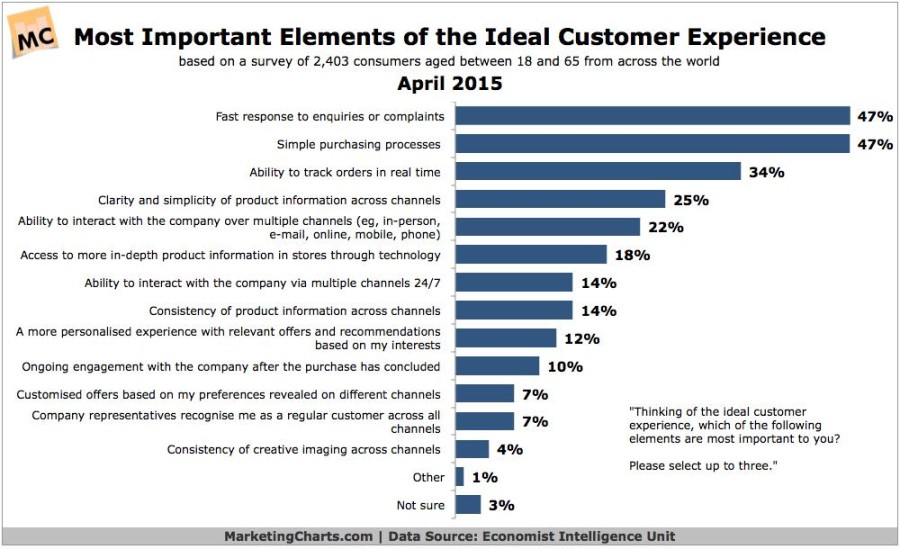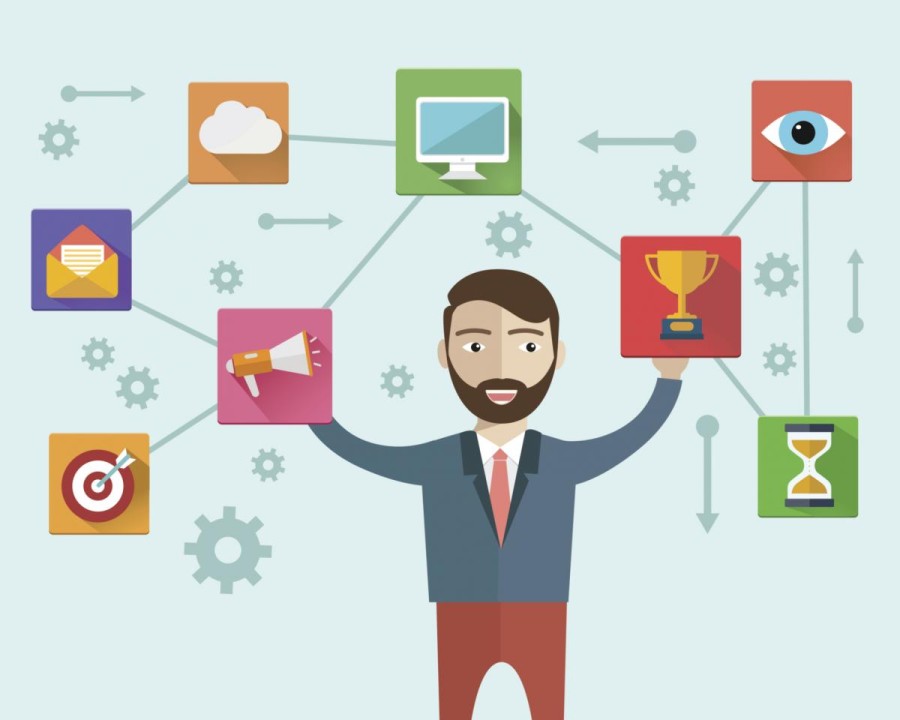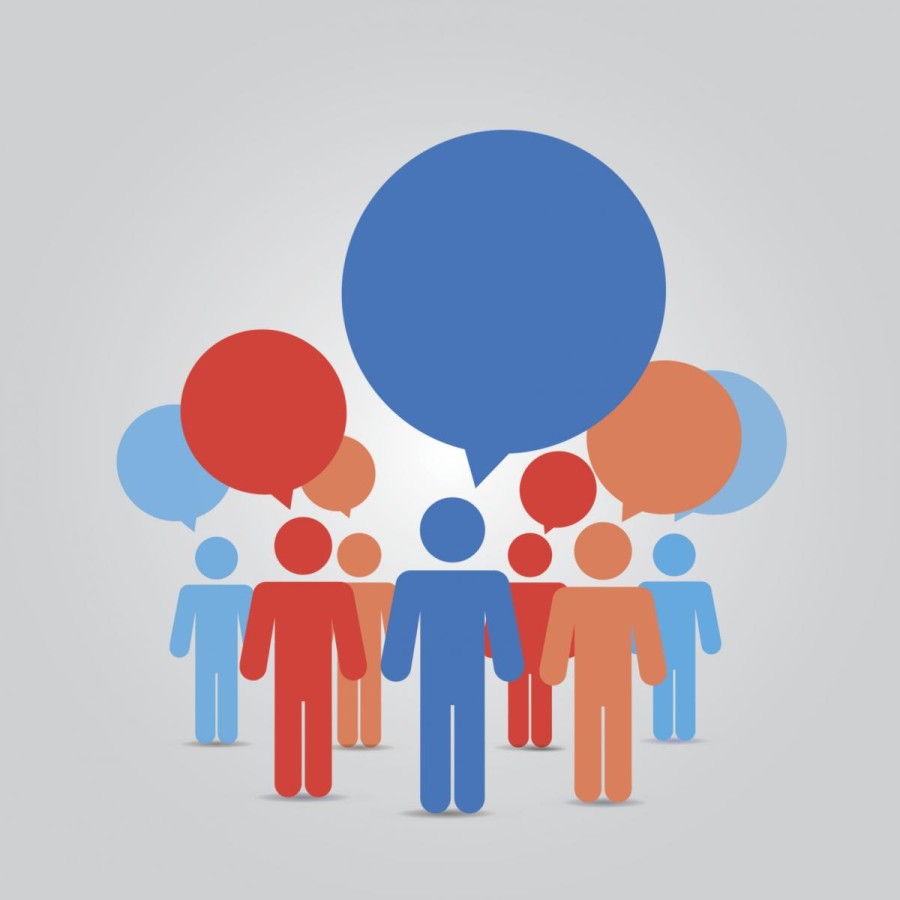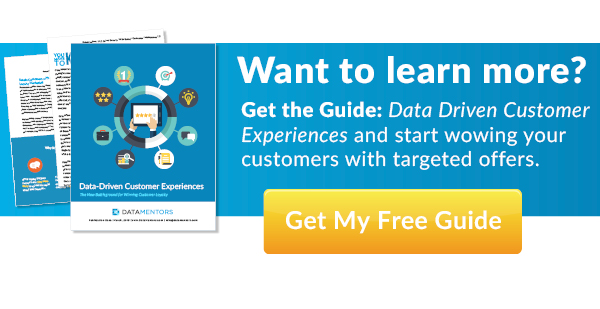
86% of marketers say they will own the end-to-end customer experience by 2020, meaning that they will become responsible for the entire customer journey. This is according to new research by The Economist Intelligence Unit (EIU) conducted on behalf of Marketo.
The study found that by 2020, 63% of respondents believe social media will be the main channel for customers; 53% say the World Wide Web; 47% point to mobile apps; and 46% mention mobile Web. The three main tech trends expected to most affect marketing organizations are mobile devices and networks at 59%; personalization technologies at 45%; and the Internet of Things (IoT) at 39%.
What Do Consumers See as the Ideal Customer Experience?
The top five areas consumers identified as leading to a positive experience included:
- 47% – Fast response to enquiries or complaints
- 46% – Simple purchasing process
- 34% – Ability to track orders in real time
- 25% – Clarity and simplicity of product information across channels
- 22% – Ability to interact with the company over multiple channels

Marketers must implement strategies for consumers to quickly and seamlessly get the service and response they are seeking across multiple channels. When consumers don’t receive the service they are looking for, they are quick to abandon the company in favor of one who can provide a better experience. Over half of US online adults will abandon their online purchase if they cannot find a quick answer to their questions, and 73% say that valuing their time is the most important thing a company can do to provide them with good service (Forrester Research). Consumers are also quick to voice their opinions, affecting other consumes’ viewpoints and eroding brand loyalty.
As part of Forrester’s research, the company asked consumers, “If you were dissatisfied with your experience with the brand that you feel connected with, which of the following would you do?” Responses included:
- 39% – Tell friends and families about the negative experience
- 12% – Write negative reviews about the brand on an online consumer review site (e.g., Yelp)
- 11% – Post negative comments about the brand on my Facebook page
- 10% – Post negative comments about the brand in an online customer community
- 10% – Post negative comments on the store/company/ manufacturer’s Facebook page
- 7% – Post negative comments on a blog — sponsored by the store/company/manufacturer
- 6% – Post negative comments on a blog — not sponsored by the store/company/manufacturer
- 6% – Post negative comments about the brand on my Twitter page
- 6% – Post negative comments on the store/company/manufacturer’s Twitter page
Consumers Seek Service Across Multiple Channels
With 47% of consumers rating fast response to enquiries or complaints as one of the most important elements in the customer experience, offering a range of self-service options is increasing in importance. Forrester rated the percent of US online adults who have used the following customer service channels in a 12 month timeframe.
- 84% – Using a self-service mobile phone application or Help or Frequently Asked Questions (FAQs) on a company’s website
- 83% – Conversation with a customer service representative or agent via telephone
- 76% – The response to an email that I sent to customer service
- 65% – Instant messaging/online chat with a live person
- 63% – Voice self-service (either touchtone or speech recognition)
- 56% – Online forum or community with other customers
- 43% – Contacting a company using Twitter
Know Your Customers and Map Their Journey
Integrating and enhancing customer data to understand your customers’ preferences creates a more intuitive cross-channel customer experience. Identifying each customer’s needs and tendencies helps brands create a journey that feels personal and empowering, regardless of the channels they choose.
With more and more digital channels for consumers to use, our customers are telling us more and expect us to collect and use this data to personalize their experience. They like our Facebook pages, browse our websites, click through our emails, and redeem mobile coupons. This data must be aggregated into a single customer view, enhanced with third-party data insights, and acted upon at the right time – based on each consumer’s preference.
Marketers can use these data insights to create relevant and contextual content at key points along the customer journey. Today’s advanced technology applications allow marketers to automate personalized campaign journey processes, ensuring automatic response to key behaviors and purchase indicators every time, without missing a beat.
And the statistics prove that enhancing the customer experience through data-driven personalization boosts customer engagement, brand loyalty, and revenue.
- 75% of consumers like it when brands personalize products and offers
- Personalized Products/Offers improve click-through rates by 14%, and conversion rates by 10%
- 61% of consumers prefer offers, even if this results in less privacy
- 56% of consumers say they would be more inclined to use a retailer if it offered a good personalized experience
- 74% of online consumers get frustrated with websites when content appears that has nothing to do with their interests
- Adding personalization experience to shopping could lift sales by 7.8%
- 40% of consumers buy more from retailers who personalize the shopping experience across channels
- 94% of companies agree that personalization “is critical to current and future success”
Download our Customer Experience Solutions Guide as we help you dive into the world of customer experience best practices to help you gain more wins on the customer experience battleground.


